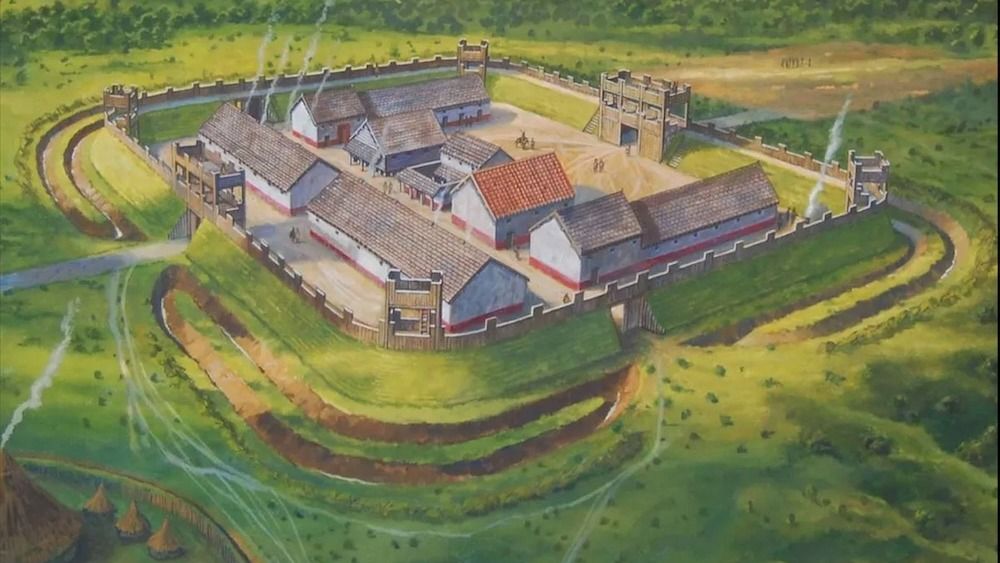The remains of a possible Roman “mega” fort that would have housed hundreds of soldiers have been unearthed under a tract of farmland in Wales. The new finding could offer evidence that this region was more fortified than previously thought.
Mark Merrony — a local archaeologist and the editor-in-chief of Antiqvvs, an online archaeology and history magazine — discovered the remnants of the fort in Pembrokeshire, a county in southwest Wales, according to his GoFundMe page.
“I had been tracing what I thought was a Roman road for years,” Merrony told Live Science. “I’ve cycled this road numerous times and always wondered why it ended. You can look at something 500 times and not see anything. But then I had a eureka moment.”
To solve the mystery, he spoke to the owner of the farm, who supported Merrony’s suspicions that the overgrown fields were hiding what was left of Roman structures. The farmer explained that he struggled to grow anything in the soil, since it was “full of slate and stone,” The Guardian reported.
Exploration of the site suggested that the possible fort measured roughly 607 by 509 feet (185 by 155 meters) and would have included multiple buildings. It may date to sometime between the first and third centuries, Merrony said, and it’s strategically placed on a slope and would have allowed soldiers to monitor the river valley below.
Related: Items used by Roman cavalry and other treasures unearthed by metal detectorist in Wales
The site’s layout has the “hallmarks of a classic Roman fort” and is shaped like a “playing card,” with rounded corners, and is surrounded by banks and ditches, according to the GoFundMe page.
“At one time there would have been rows of buildings that would have likely included a commander’s house, an administrative block, a barrack block, a granary and a garrison that would have housed 500 men,” Merrony said.
Merrony also unearthed a sharp piece of stone that he identified as a Roman roofing slate. On the underside of the artifact, he found a chiseled line where it would have been “grooved to fit” alongside other tiles, The Guardian reported.
In addition to the fort and piece of slate, he uncovered what he suspects could be a miniature fort elsewhere on the property.
“A small fort near the road also appears to be Roman,” Merrony said. “The area is very overgrown but the fortlet is beautifully preserved and is connected to the larger fort by a boundary, possibly an aqueduct.”
Merrony said the fort is surprising, considering this area was once home to an Indigenous people known as the Celtic Demetae. It was long believed that the tribe and Romans were “on peaceful terms,” but this new finding upends this belief, The Guardian reported.
“They were thought to be pro-Roman, but now I don’t think that’s true at all,” Merrony said. In fact, he thinks the Romans were “hitting this area with an iron fist,” The Guardian reported.
This isn’t the first time Merrony has found Roman structures in Wales. In 2002 and 2016, he discovered Roman villas in different parts of the country, and in 2022, he identified another Roman road.
Ken Dark, an archaeologist and historian at King’s College London who was not involved in the project, said that finding a fort in this part of Wales is important for our overall knowledge of the Romans. However, he thinks that more research is necessary to know for sure whether the structure is linked to the Romans.
“Although currently the evidence is rather tenuous, discovering a major Roman fort in southwest Wales would be an important addition to our knowledge of Roman Britain,” Dark told Live Science in an email “As such, this suggestion definitely needs following up with geophysical survey and, if that proves promising, probably evaluation by limited excavation.”


